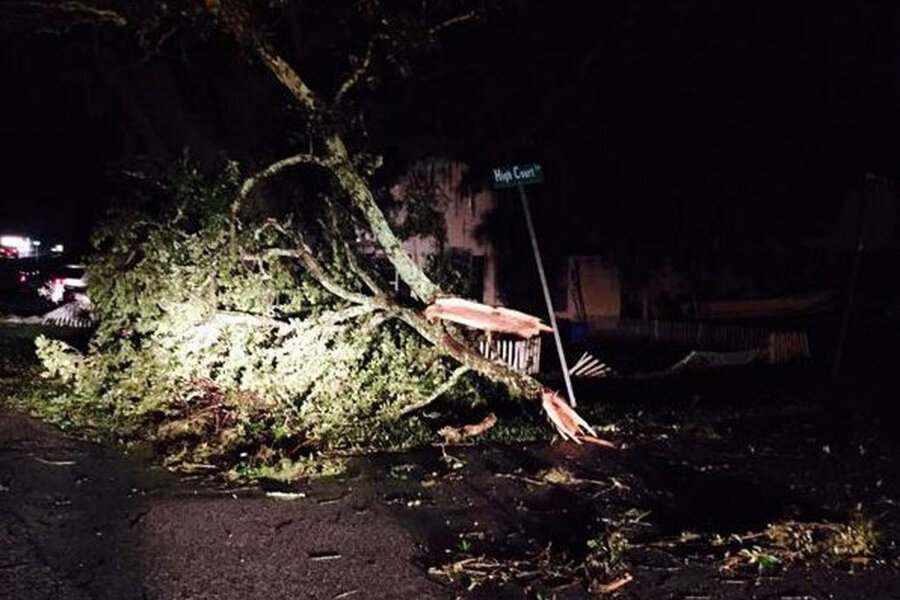Charleston tornado: How often do twisters hit South Carolina?
Loading...
A tornado struck South Carolina late Thursday night and early Friday morning.
The tornado moved in from the ocean and downed power lines and damaged property in Johns Island in Charleston. Ten homes were damaged in total and a trailer was flipped. Numerous windows were blown out and the strong winds knocked trees onto roofs. No injuries have been reported.
The National Weather Service issued a tornado warning for the area around 1 a.m., just as St. John’s Fire District officials reported receiving emergency calls. Roadways are still being cleared.
“The cleanup effort is going very well. DOT is assisting us and we had Charleston County Emergency Management coming and they’re assisting us,” James Ghi, a battalion chief with the St. John’s Fire District, told local news station ABC 4.
On average, the state sees 26 tornadoes per year, according to the South Carolina State Climatology Office. The most recent major tornado event occurred in 2004, when a string of 47 twisters injured 13 people and wrought $2.77 million damages across the state.
There have been no immediate reports of any injuries from Friday's twister.
South Carolina Electric & Gas reported that by daybreak only 85 customers were without power and the company expected to have restored all outages by midmorning. Some 200 homes were without service during the height of the storm.
The American Red Cross was on hand to help those with damaged homes or without power from the storm.
The Smith family owned one of 10 homes damaged on Johns Island.
“When the tornado first hit, we were in my garage.... We didn’t know what was happening. We didn’t know if we were going to be okay and we didn’t know where anything was,” Sydney Smith told ABC 4 News.
While local reports of the incident say that the damage was a result of a tornado, the National Weather Service has not confirmed whether or not the storm was a tornado. The agency planned to send a survey crew to the area Friday to check damage and confirm the type of storm.
A flash flood warning was in effect for the Charleston area until 8 a.m. Mr. Ghi warns that roads might flood with the high tide.
This report includes material from the Associated Press.








